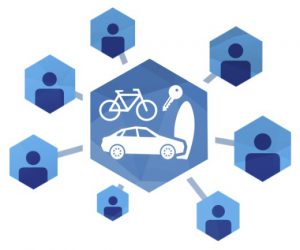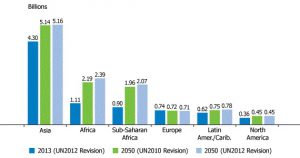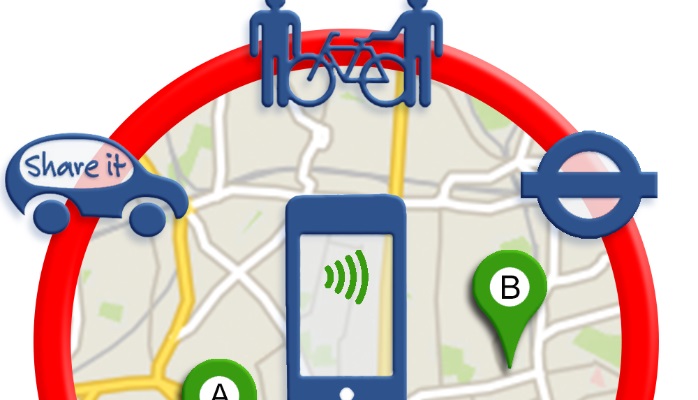Shared-use Mobility: today, we start we a new series of article on shared-use mobility. In the following articles, we will analyze each of the transportation services that are shared among users. Today, we analyze the meaning of shared-use mobility, the present situation and some speculations about future technologies.
Shared-use mobility is a term used to describe transportation services that are shared among users, including public transit; taxis and limos; bikesharing; carsharing (round-trip, one-way, and personal vehicle sharing); ridesharing (car-pooling, van-pooling); ridesourcing/ride-splitting; scooter sharing; shuttle services; neighborhood jitneys; and commercial delivery vehicles providing flexible goods movement.
Shared-use mobility sits within the broader phenomenon that has been termed the ‘Sharing Economy’, in which widespread usage of emerging information and communications technology (ICT), particularly smartphones, enables new forms of market interactions that can enable both new services and improved efficiency in asset utilization. Rather than individual physical items being purchased, owned, controlled, maintained and used solely by their owner, in shared-mobility systems the physical assets (bicycles, automobiles, small aircraft, etc.) are accessed sequentially by multiple users on a pay-per-use basis. This implies higher utilization rates of assets with relatively high fixed costs; in the case of automobiles the classical high fixed cost/low marginal cost paradigm of private car ownership is reversed.
Whereas shared-mobility was a niche market a decade ago, today the phenomenon has entered the mainstream, with a broad array of major automakers investing in shared-mobility services.
In fact, the UN reported in 2015 (UN World Population prospects) that migration patterns and population growth have created an equal split between inhabitants of cities and rural areas for the first time in human history. 
This general trend will continue for the next several decades and will produce a very urbanized world. The continued use of personal transportation model is simply unsustainable given the combination of energy inefficiency, environmental consequences of fossil-fuel usage, potential disruptions to fuel supplies, urban sprawl created by automobile reliance, and congestion caused by inadequate alternative modes of transport. What people need is to radically rethink the problem by examining not only the automobile itself, but also how it is used in cities (where most are currently living), including: 1. size and weight, 2. range and speed, 3. gasoline versus electric, 4. driver-controlled versus autonomous driving, and 5. private versus shared ownership.
Shared-use mobility services are probably the best solution to alleviate the problem. In fact, shared-use mobility services can: reduce traffic congestion, mitigate various forms of pollution, reduce fossil fuel consumption, and improve efficiency of transportation means. This is the reason why technology is advancing quickly and will advance more and more in the future.
Many shared-use vehicles service providers today include some degree of advanced technologies (online reservations, vehicle tracking, smart card access) in their operations. Currently, there is a developing need for interoperability among shared-use vehicle service providers (e.g., smart card access among carsharing organizations) and transit operators (e.g., transit fare collection via smart cards). Interoperability will likely result in higher customer satisfaction and use, leading to greater market penetration.  Similarly, some standardization will likely unfold for overall operational techniques (online reservations and insurance policies), customer interactions, and to some degree vehicle interfaces. Because shared-use vehicle systems are still a relatively new mobility concept, an industrywide standardization approach is still premature. Nevertheless, there are attempts to identify many of the important issues that will play a significant role in the interoperability discussions among shared-use vehicle providers and the development of industry standards in the future. There are key elements in intelligent shared-use vehicle system operations and trade-offs encountered during the pioneering stage of shared-use vehicle system developments.
Similarly, some standardization will likely unfold for overall operational techniques (online reservations and insurance policies), customer interactions, and to some degree vehicle interfaces. Because shared-use vehicle systems are still a relatively new mobility concept, an industrywide standardization approach is still premature. Nevertheless, there are attempts to identify many of the important issues that will play a significant role in the interoperability discussions among shared-use vehicle providers and the development of industry standards in the future. There are key elements in intelligent shared-use vehicle system operations and trade-offs encountered during the pioneering stage of shared-use vehicle system developments.

Shared-use mobility: what is it? Present and Future
Posted by
John_Reed
8 years Ago
25th May 2017
What’s your reaction?
Shares
John_Reed

















